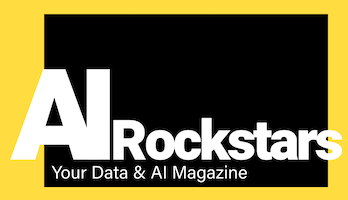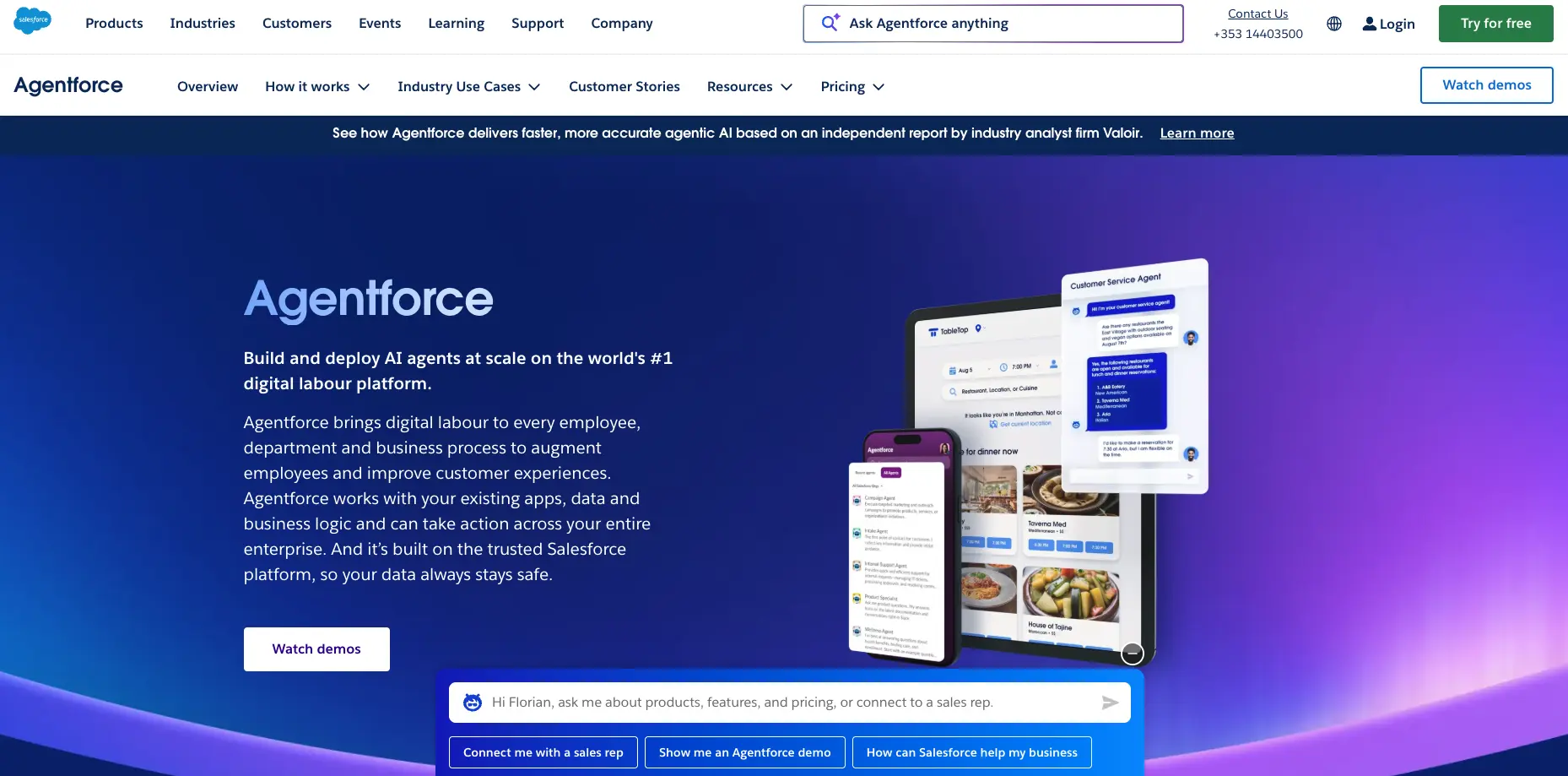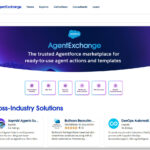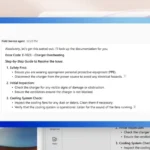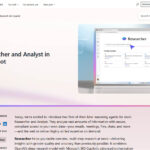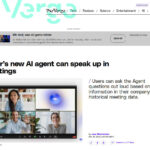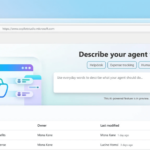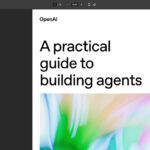With Agentforce, Salesforce has created a platform that transforms artificial intelligence from reactive chatbots to autonomous business agents. Over 12,000 companies already rely on the technology, which generated sales of 900 million dollars in its first year.
Agentforce differs fundamentally from traditional automation solutions in its ability to understand business contexts, think through complex scenarios and execute meaningful actions autonomously. The platform is based on three core components: Data 360 for real-time data access, the Atlas Reasoning Engine for context-based understanding and action decisions, and a comprehensive metadata infrastructure that enables agents to interpret business processes and act accordingly.
The technical architecture has been significantly enhanced with Agentforce 360 and the Agentforce 3 version announced at Dreamforce in October 2025. The new Agent Graph architecture combines deterministic workflow management with flexible large language model reasoning, addressing the key challenge between predictable business behavior and intelligent adaptability.
Technical foundations and hybrid reasoning model
The Atlas Reasoning Engine breaks down queries into manageable tasks, evaluates each step and suggests solutions, while continuously adapting if initial approaches do not lead to the goal. Unlike keyword-based systems or predefined decision trees, the engine analyzes the context and develops adaptive strategies for problem solving.
Agent Script enables precise control over agent behavior by combining deterministic workflows with LLM flexibility. Instead of relying solely on prompt engineering – a practice known in the industry as “doom-prompting” – developers can insert custom logic at exact workflow points while retaining full language model capabilities. This hybrid approach is increasingly becoming the industry standard, as demonstrated by comparable architectures from OpenAI’s AgentKit, ElevenLabs’ Workflow, and tools like Flowise and N8N.
Agentforce Voice extends these capabilities to voice channels, enabling AI-powered conversations across phone, web and mobile. Unlike traditional interactive voice response systems, Agentforce Voice uses advanced natural language processing technologies to understand context, intent and mood, enabling fluid, human-like conversations rather than rigid menu structures. The platform combines advanced reasoning capabilities with ultra-low latency for natural conversations without disruptive delays.
The Data 360 architecture implements a multi-tier structure that combines lakehouse principles with real-time storage capabilities. The lakehouse layer provides cost-effective storage for large volumes of historical and batch data, while real-time storage is optimized for low latency and high-frequency updates. A low latency store enables true storage hierarchies with seamless data migration between memory (SSD) and traditional Lakehouse storage tiers. Over 270 native connectors through MuleSoft, APIs and software development kits enable comprehensive connectivity to virtually any external system.
Practical implementation and measurable business results
Companies report significant improvements in operational metrics after Agentforce implementation. reMarkable deployed its first AI agent within three weeks – a knowledge-based FAQ agent named “Mark” that has since handled over 18,000 service conversations, with Net Promoter Score and deflection rates improving weekly.
Engine reduced average case handle time by 15 percent and scaled targeted engagement by 427 percent without disrupting existing workflows. These gains were achieved while the human sales development team remained unchanged. Carnegie Learning reduced research time by 92 percent – from up to an hour to just 5-10 minutes – and enables sales reps to generate account summaries in seconds when prospects call.
1-800-Accountant reported that Agentforce autonomously resolved 70 percent of administrative chat engagements during critical fiscal weeks in 2025. Grupo Globo increased subscriber retention by 22 percent compared to the previous chatbot solution. Grupo Falabella increased digital customer service interactions on WhatsApp to 71 percent within three weeks while reducing reliance on phone calls, enabling scalable 24/7 support capabilities.
Pricing models and financial considerations
Salesforce offers flexible pricing options for Agentforce that address organizations of different sizes and maturity levels. The primary pricing mechanism is based on Flex Credits, which align cost directly with value by scaling with usage. Each Agentforce action consumes a defined number of Flex Credits. Case Management with three actions consumes 60 Flex Credits per interaction, which equates to $0.30 per case. Field Service Scheduling with 120 Flex Credits costs $0.60 per appointment, while Employee Onboarding Questions costs $0.10 per question.
Agentforce 3 introduced simplified, flexible pricing with new Agentforce for Sales, Service and Industry Cloud SKUs that include per-user pricing and unlimited use of Actions for employee-facing agents. This represents a significant shift toward accessibility, especially for mid-market organizations that have concerns about consumption-based cost growth. Agentforce Foundations, a $0 add-on for Enterprise Edition and higher, includes credits for the first 1,000 conversations with Agentforce for Service and allows organizations to evaluate platform capabilities before making substantial financial commitments.
ROI calculations show how Salesforce customers can quantify Agentforce value. Organizations calculate savings by tracking reductions in cost per interaction, time to resolution, staffing requirements and customer churn. A company that reports that each customer inquiry takes ten minutes to process can model savings by calculating the time reduction to three minutes per inquiry multiplied by the total annual contact volume.
Multi-channel deployment and Slack integration
Agentforce transcends traditional chatbot limitations by seamlessly deploying across virtually any communication channel where employees and customers already work. Agents can be embedded across web and mobile chat, email, SMS and Slack to reach customers where they are, with agents natively responding and seamlessly handing over to human agents across any channel when situations exceed their scope of expertise.
Slack has established itself as a particularly important deployment platform for Agentforce, acting as a conversational hub where agents and employees work side-by-side. With Agentforce in Slack, organizations can bring custom agents directly into their workflow, allowing employees to interact with Agentforce as if they were another team member. Agentforce responses are based on both conversational data from Slack and CRM data from Salesforce, providing rich context for intelligent responses and actions.
Slack Employee Agent Templates simplify the creation of specialized task-based digital team members directly within Slack. The Slack Customer Insights Template allows agents to access Salesforce data and provide account summaries, collect insights and create canvases with key details directly within Slack conversations. The Slack Onboarding Agent Template transforms onboarding into an interactive Slack experience by helping new employees find answers and connections in real-time, using knowledge bases and public Slack history to explain company policies, identify experts and send introductions on behalf of the new employee.
These templates become much more powerful with permission-based access to connected Salesforce Data Library combined with role-based Slack context. Assigning the General Slack Topic in Agent Builder grants agents the ability to operate on each individual user’s context and permissions when prompted, using
Source: Salesforce
